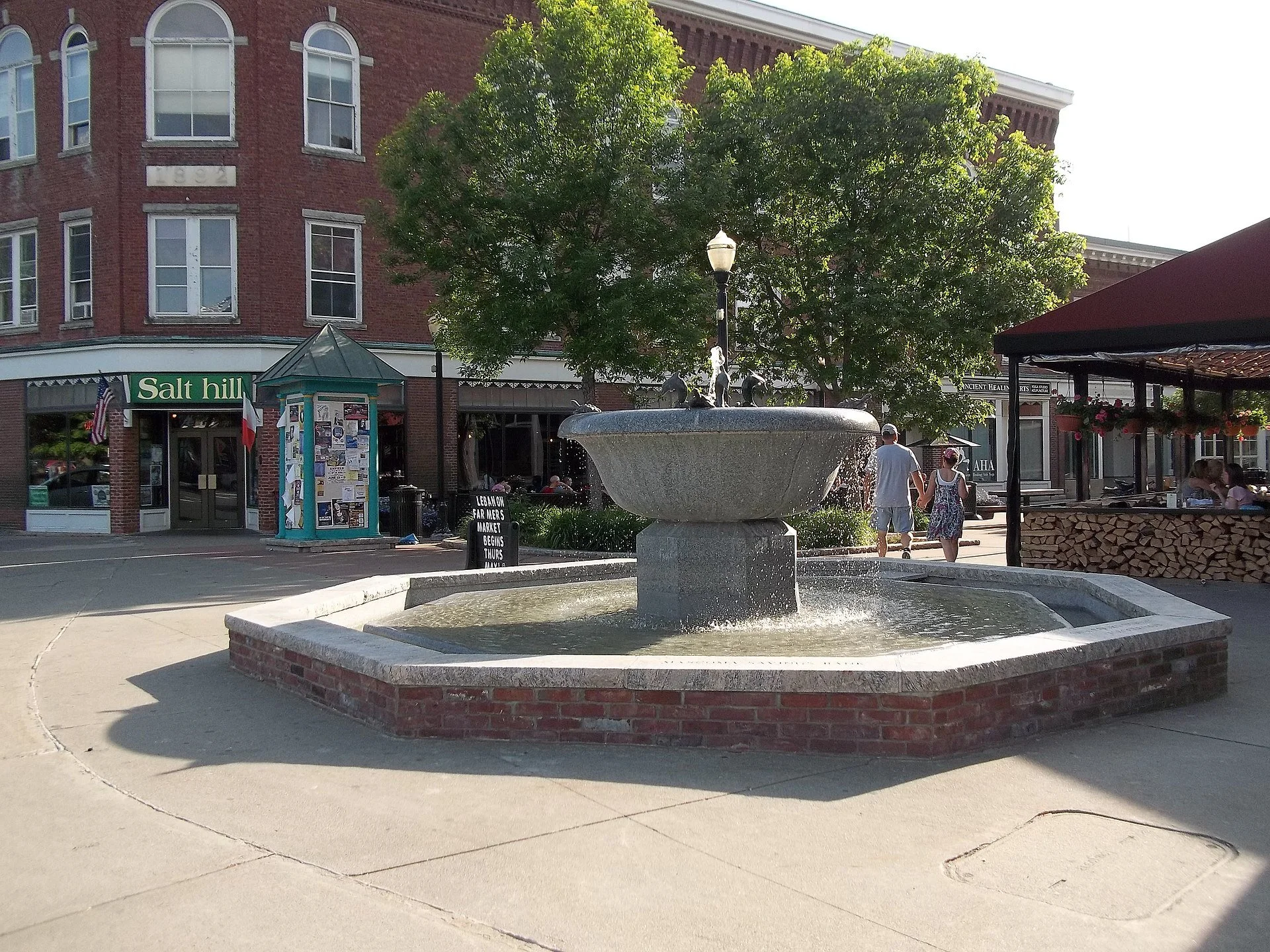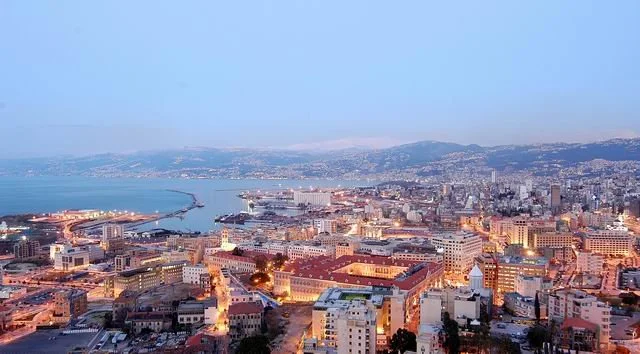
Embrace contradictions
From Joan Feirabend’s show “Multitudes,’’ at AVA Gallery and Art Center, Lebanon. N.H., Oct. 6-Nov. 4.
The gallery says:
“For thirty-two years, art has been Joan Feierabend’s daily practice, ‘I have long recognized that my paintings are wiser than I am. When a painting tells me where it wants to go, I do my best to follow.’ Working with multiple layers, she tinted each surface with color and removed paint by pressing a crumpled cloth onto the surface, creating a sort of ‘blot’– an interruption akin to the way unforeseen events can imprint a life. Each painting took many days of layering in this way. Materials used include acrylic paint, ink, pencil, colored pencil, charcoal, pastel, and gold leaf. Her tools were brushes, spatulas, pens, stencils, tape, sponges, wadded cloth, paper, and baby wipes.
“Fond of the verse, ‘I contain multitudes,’ in Walt Whitman’s poem, ‘Leaves of Grass', Feierabend believes this to be true of us all. ‘We all contain contradictions…the complexity that every human being brings to the art– including the artist, speaks to our unique selves.’ She recognizes that viewers may experience multitudes of contradictions while making selections as they will no doubt waver between the diverse choices offered.’’
Fountain in downtown Lebanon
— Photo by Artaxerxes
Llewellyn King: Oh, the glory that was Beirut
Beirut at sunset some years ago.
WEST WARWICK, R.I.
This last spring, I was in Washington for an awards dinner given by the American Task Force on Lebanon. The talents of the exceptionally gifted Lebanese were on display: The room was filled with accomplished expatriates and immigrants — business leaders, diplomats, physicians, writers and poets, an opera singer — from their troubled Middle Eastern homeland.
But the event’s high point was the recognition of the scientists who had saved countless lives by creating Moderna Inc.’s COVID-19 vaccine: four Lebanese Americans.
Among the children of the world’s many diasporas, few have made as large a mark as the Lebanese. Their native country has fewer than 6 million people, including a million or more refugees.
The Washington celebration was in painful contrast to the shambles that is Lebanon today: bankrupt, corrupt, violence-riven, starving and hopeless.
According to Edward Gabriel, a Lebanese-American who served as U.S. ambassador to Morocco during the Clinton administration, Lebanon is in danger of sinking so far that it will be a failed state, ungoverned and ungovernable.
Gabriel has just returned from a visit by the American Task Force on Lebanon, and he reports of a country in parlous disarray.
In a paper for the task force, Gabriel stated, “On this day (referring back to Aug. 4, 2020) two years ago, over 500 tons of ammonium nitrate stored in a warehouse at the Port of Beirut exploded, causing more than 220 deaths, 7,000 injuries, 300,000 displaced individuals, and at least $1.5 billion in property damage. Since then, there has not only been a lack of closure for the families of the victims but the very corruption and negligence that caused such carnage and suffering has yet to be addressed by those in power.”
In their meeting with the Lebanese leadership, Gabriel and the task force discussed the urgency of implementing reforms to access International Monetary Fund money and get aid from the United States and other allies, including Saudi Arabia. Food is critical. Consider that Lebanon imports 90 percent of its grain from Ukraine and Russia.
In the late 1950s and early 1960s, Lebanon, which stretches along the Mediterranean Sea north of Israel, was a treasure of a country. Its seaside capital, Beirut, was a sparkling jewel, rivaling Monaco in its incandescence.
Beirut in its heyday had all the cache of Tangier and Casablanca and was a destination for the adventurous, the sophisticated, and for artists, journalists and writers. A-listers headed there before that term existed.
It also was a haven for spies and the intelligence services that employed them. Its most famous spy was British double agent Kim Philby, who fled from Beirut to Moscow when he was about to be arrested, in January 1963.
As a young reporter in London, I was fascinated by the tales of the high life in Beirut as told by otherwise jaded foreign correspondents. “There’s nothing you can imagine you want that you won’t find in Beirut,” a famous photographer for the Magnum photo agency told me.
It wasn’t just nightlife and sin that drew the world’s press to Lebanon. It was a center of transport, and you could get anywhere from its airport by air or anywhere bordering the Mediterranean by ferry. Yes, Beirut addressed world-weary journalists’ appetites, but it also was a very practical place to work.
In 1963 Lebanon, a small country with a small population of 4 million, was a highly successful one, envied and copied. The basic layout of the beach development in Tel Aviv, I was told in Israel, is modeled on that of Beirut.
British intellectuals often cited Lebanon’s religious minority-respectful government as a model for diverse societies as Britain withdrew from its former colonies. Traditionally, the three major religious groups share power this way: The president is always a Maronite Christian, the prime minister is always a Sunni Muslim, and the speaker of parliament is always a Shia Muslim.
The fall of Lebanon began with a huge influx of destabilizing Palestinian refugees and was sped up by the arrival of rival terrorist militias, particularly Iran-backed Hezbollah, determined to prosecute a war with Israel.
Lebanon’s brightest prospect is the development of its gas reserves in the Mediterranean. Hezbollah has been frustrating the conclusion of a maritime agreement between Lebanon and Israel, which would enable drilling for natural gas in Lebanon’s offshore fields, where reserves are plentiful and proven.
That and a revival of tourism are Lebanon’s best, slender hopes. Hope is people, like me, will want to go, looking for the ghosts of a giddy nightlife and James Bondian intrigue. I hope to go this year.
Llewellyn King is host and executive producer of White House Chronicle, on PBS. He’s based in Rhode Island and Washington, D.C.
On Twitter: @llewellynking2
‘A Wintry Mix’
“Would you like to swing on a star?” (collage), by Rich Fedorchak, of Thetford, Vt., in the show “Wintry Mix’,’ at AVA Gallery and Art Center, Lebanon, N.H., Nov. 19-Dec. 30.
The gallery says: "The holiday exhibition will feature the work of member artists from Vermont and New Hampshire. Works in a variety of media—oil, watercolor, drawing, printmaking, mixed media, photography, ceramics, textiles, sculpture, jewelry, and glasswork—will be on display and available for sale in a wide range of prices."
A little local history
— Photo by Artaxerxes
Raja Kamal and Arnold Podgorsky: Our steps to end Gaza war
If a biblical saw could carve Israel out of the Middle East and to drift toward Cyprus as an island, the Palestinian-Israeli conflict would disappear. As no one wields such a mighty weapon, the antagonists must learn to survive with the neighbor they have. Since modern Israel's founding, in 1948, Arabs and Israelis have gone to war numerous times. Not counting the two Intifadas and many smaller skirmishes, Israel and its neighbors fought wars in 1948, 1956, 1967, 1973, 1982, 1993, 1996, 2006, 2009, and 2014 – more than one war each decade of Israel’s short history. Over time, the faces of Israel’s adversaries have changed and Israel achieved peaceful resolutions with Egypt and Jordan. More recently though, religious and demographic changes inside both Israel and its adversaries have produced an increasingly intractable situation.
In Israel’s first four wars, its enemies were nation-states with conventional military forces – principally Egypt, Syria and Jordan, supported by other Arab countries. Adversaries and targets were clearly defined; the conflicts were relatively brief and the strategic results were unambiguous. The Six-Day War of 1967 resulted in Israel becoming a de facto regional military superpower. In the wake of the October 1973 war, the Arab countries realized that Israel could not be defeated militarily.
Today, Israel’s most ardent enemies – Hamas in Gaza and Hezbollah in Lebanon – are driven by extreme religious ideologies. The approach that Israeli leaders have deployed to counter these foes has offered but brief advantages. Israel’s reliance on “hard power” has not and, in the long run, cannot pave a road to peace. As a result conflicts erupt easily and frequently.
Each time Hamas and Israel engage militarily, any peaceful solution becomes more elusive and unachievable. The repeated fighting is increasingly costly to Gaza’s trapped population as Israel and Hamas become more aggressive in the use of lethal weapons and Hamas deploys human shields. Hamas rockets targeting Israel are more sophisticated than those used in previous wars, while Israel deploys deadly, contemporary weapons, including drones. The result is tragically high casualty-counts displayed on global networks and social media.
As Israel’s enemies have grown more ideologically extreme, so too has Israel. Israel has its own religious and ideological extremists, and the current coalition government reflects no true commitment to making peace. Seeing no historical evidence that concessions produce peace, Prime Minister Benjamin Netanyahu’s own Tea Party ties his hands and limits what he can offer to the Palestinians. Leaders on both sides of the conflict dictate policies that harden attitudes and tighten the knots at the core of their disputes.
Gaza is the tragic focus of the conflict, but it could also be the crucible through which a solution is forged. Gazans often describe their home as the largest jail in the world. With 1.8 million inhabitants living in only 139 square miles, it is one of the most densely populated places on Earth. Israel’s total blockade of Gaza leaves the area’s economy in shambles, with an unemployment rate approaching 50 percent. The latest war will surely make matters worse. With restrictions on travel, import and export, fishing rights and banking, the quality of life in Gaza has been deteriorating for a decade or more, yielding hopelessness and the rise of religious fundamentalism. To counter these trends, a paradigm shift to “soft power” and economic development is desperately needed.
The killings of Egyptian President Anwar Sadat and Israeli Prime Minister Yitzhak Rabin left a vacuum in which few could move the needle toward peace. No Israeli leader since Rabin has had the creativity or mandate to advance toward peace in a meaningful way, while the refusal of many Palestinian to countenance Israel’s existence under any conditions has stifled serious discussion. Lacking vision, leadership, leaders on both sides have been mere guardians of the status quo.
As a nation-state itself, it falls to Israel to make the bold move to confirm its moral leadership and provide Gaza a path to integration as a member of the civilized world. Netanyahu should unilaterally propose the following actions for peace:
1. Easing significantly the blockade of Gaza.
2. Allowing and encouraging economic activity there, including the freer movement of people in and out of Gaza, fostering employment and education.
3. Removing restrictions on funds entering Gaza.
4. Providing tax incentives to Israeli firms to open plants adjacent to Gaza where Gazans might seek employment.
5. Removing restrictions on exports from Gaza.
6. Spearheading an international “Marshall Plan” for Gaza to help rebuild the economic infrastructure.
These actions would accelerate the rebuilding of Gaza. They would improve Gazans’ standard of living significantly, helping to reduce the hopelessness that drives many to extremism. Collectively, these actions would be a far better investment in Israel’s security than any weapon. What would Netanyahu require in return?
1. Hamas agreement to a truce, to disarm Gaza, and to support the above package.
2. An international plan and pledge to monitor that disarmament, including eliminating all rockets currently possessed by Hamas and eliminating tunnels.
3. An international force of about 25,000 to oversee border security between Gaza, Israel and Egypt.
While these steps alone would not achieve a lasting peace between Israel and the Palestinians, they would significantly improve the situation on the ground and establish a framework for a future status agreement. Citizens of Gaza and Israel’s neighboring towns would have the opportunity, over time, to develop the habits of peace. Netanyahu would emerge as a visionary leader, earning the global respect shared by Rabin and Sadat. Netanyahu must be willing to make bold decisions to avert the next war.
Raja Kamal is senior vice president of the Buck Institute for Research on Aging, based in Novato, Calif. Arnold Podgorsky is an lawyer and president of Adas Israel Congregation in Washington, DC, a Conservative synagogue. This column states their personal views and not the official views of either organization.




